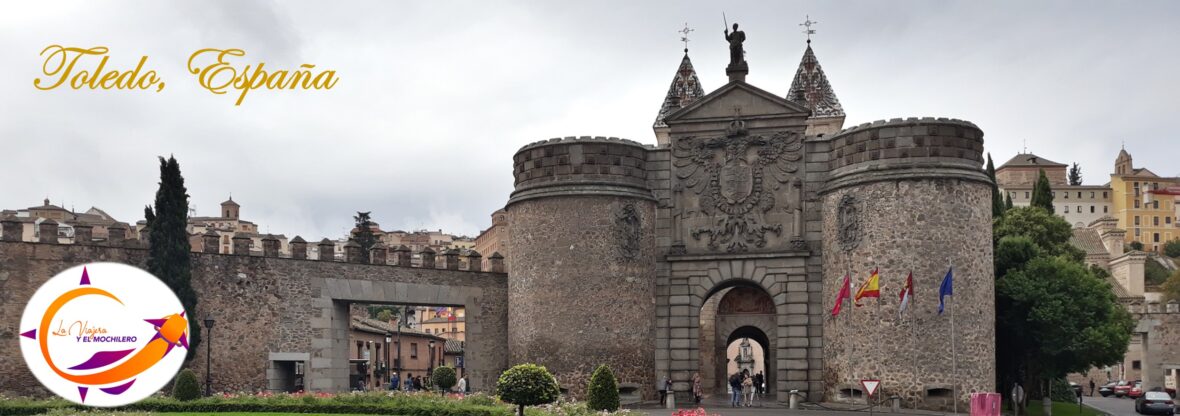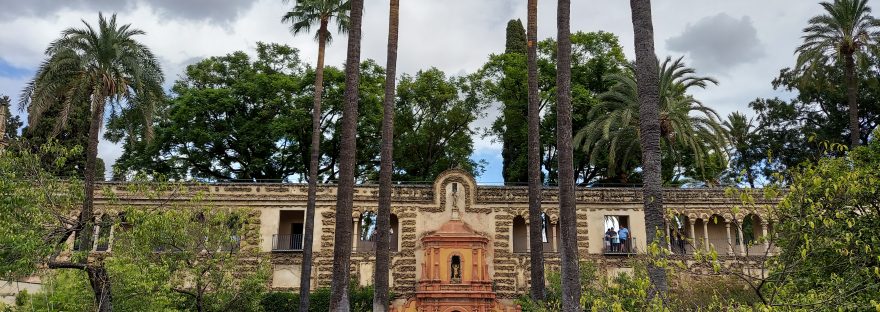The gardens are a fundamental element of the Real Alcázar of Seville. They are the oldest in the city and since their creation they have undergone major alterations that have transformed their original layout.
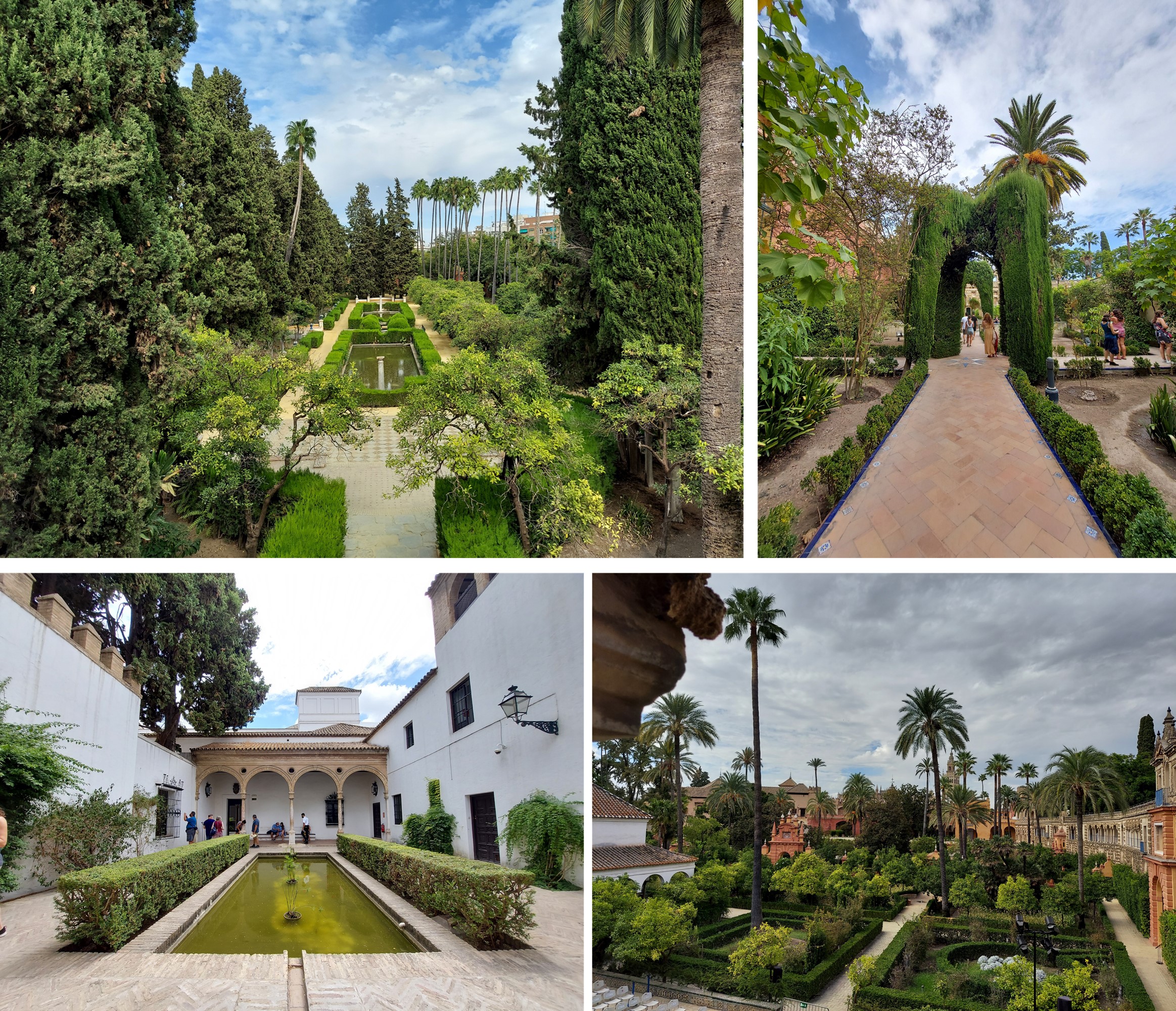
In the late Middle Ages an Alcazar had been formed with buildings from different periods, small landscaped courtyards and large orchards. Reformed in the 16th century and at the beginning of the 17th century, they conserved as a Muslim heritage the concept of compartmentalized gardens without any link between them, as well as the usual low fountains, tiles and orange trees.

These are nineteen beautiful gardens, of diverse forms, where a good diversity of plants can be observed. And one of the elements that cannot be missing is water, which is manifested through fountains and ponds. Another of the elements that complete the gardens of the Royal Alcazar are its paintings and sculptures, which accompany the fountains and ponds.

We will begin our tour by the most photographed pond of the Real Alcázar of Seville, the pond of Mercury. It is the ancient pool or pond that collected the waters that came from the Roman aqueduct, reused by the Muslims, known as the “Caños de Carmona”. These waters were used to irrigate the orchards and gardens of the Royal Alcazar of Seville. From the year 1575 it was transformed and became a pond, being crowned with a Renaissance bronze sculpture of the god Mercury, made by Diego Pesquera and cast by Bartolomé Morel. The same artist cast the gratings, balls and lions that surround the pond.
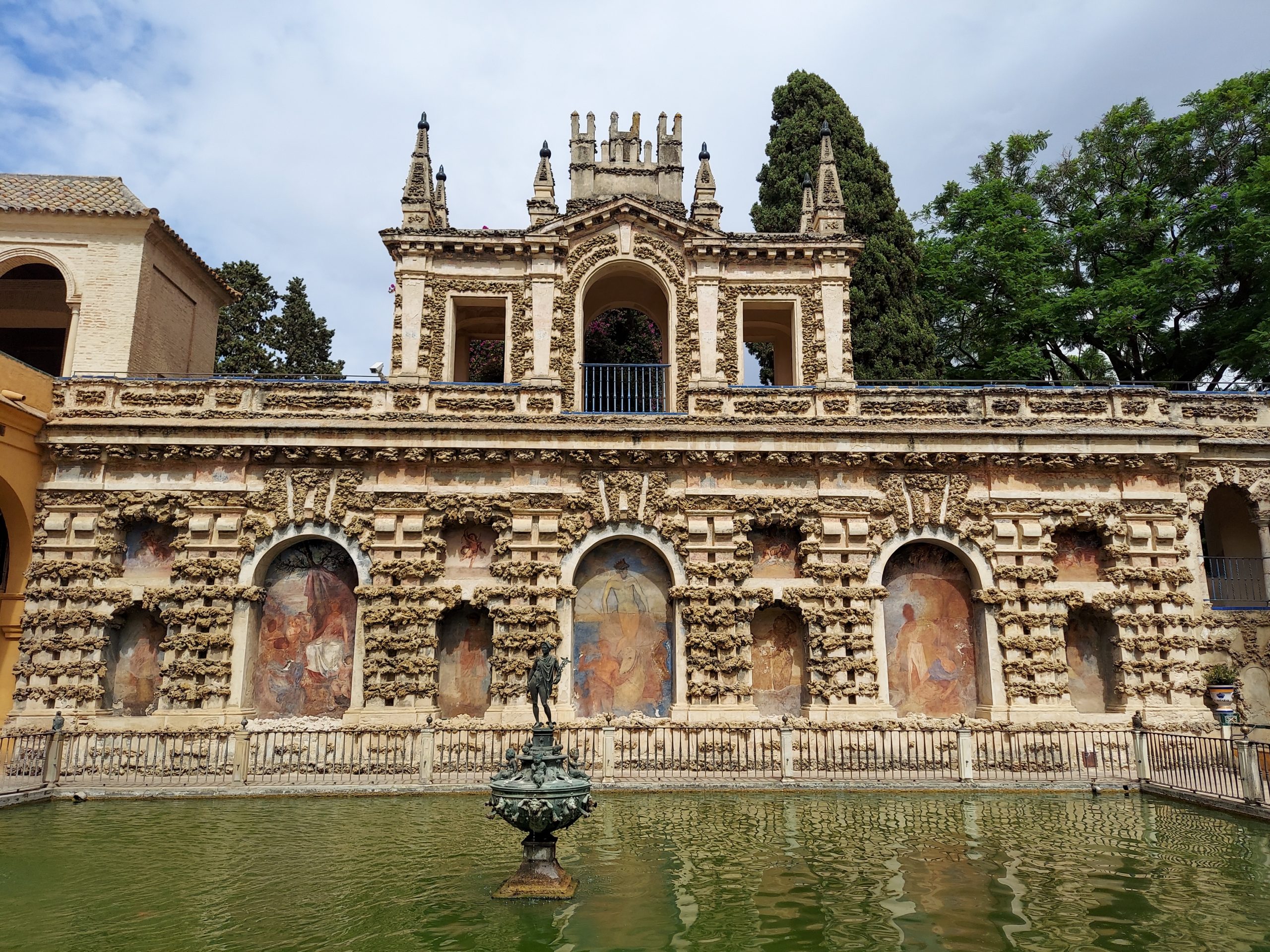
Behind the pond of Mercury is a 160-meter long wall that runs northwest-southeast through the gardens and divides the green area into two distinct areas: on one side the primitive gardens and on the other, the old orchard area that was also converted into gardens in the late nineteenth century, which abounds with orange and lemon trees.
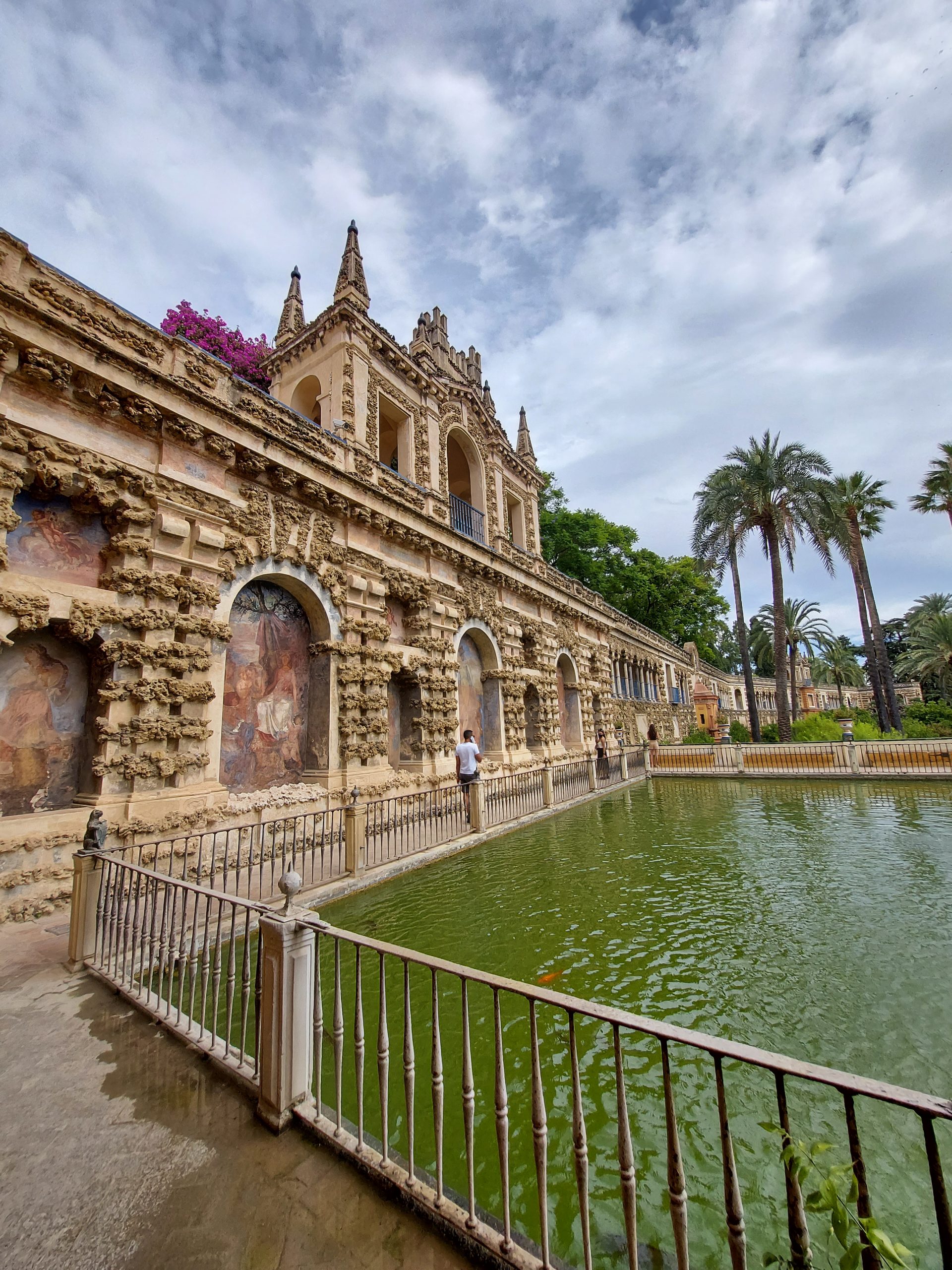
The origin of this construction can be found in an old Almohad wall from the 12th century, which served as a military defense and to control the floods of the Tagarete River. In 1612, the wall was transformed into the present-day Galería de Grutescos and one of the faces of the wall was decorated.
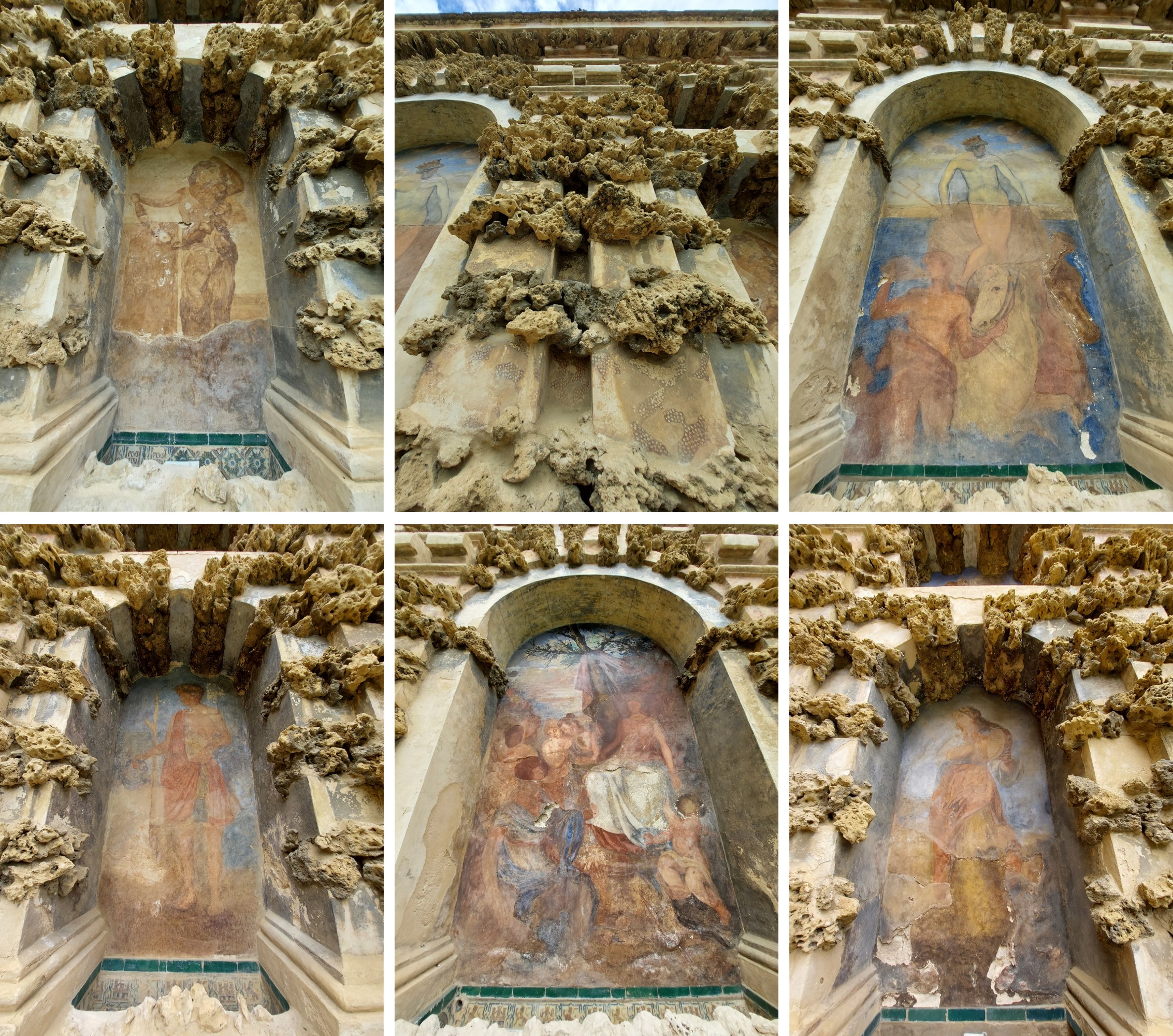
The ornamentation consisted of covering the walls with courses of different stones and painting between the stones, with imitations of marble and frescoes by Diego Esquivel of classical mythological scenes. The transformations were not completed until the 19th century, when this area acquired the appearance it has today. This wall also has an upper gallery where beautiful views of the gardens of the Real Alcazar of Seville can be appreciated.
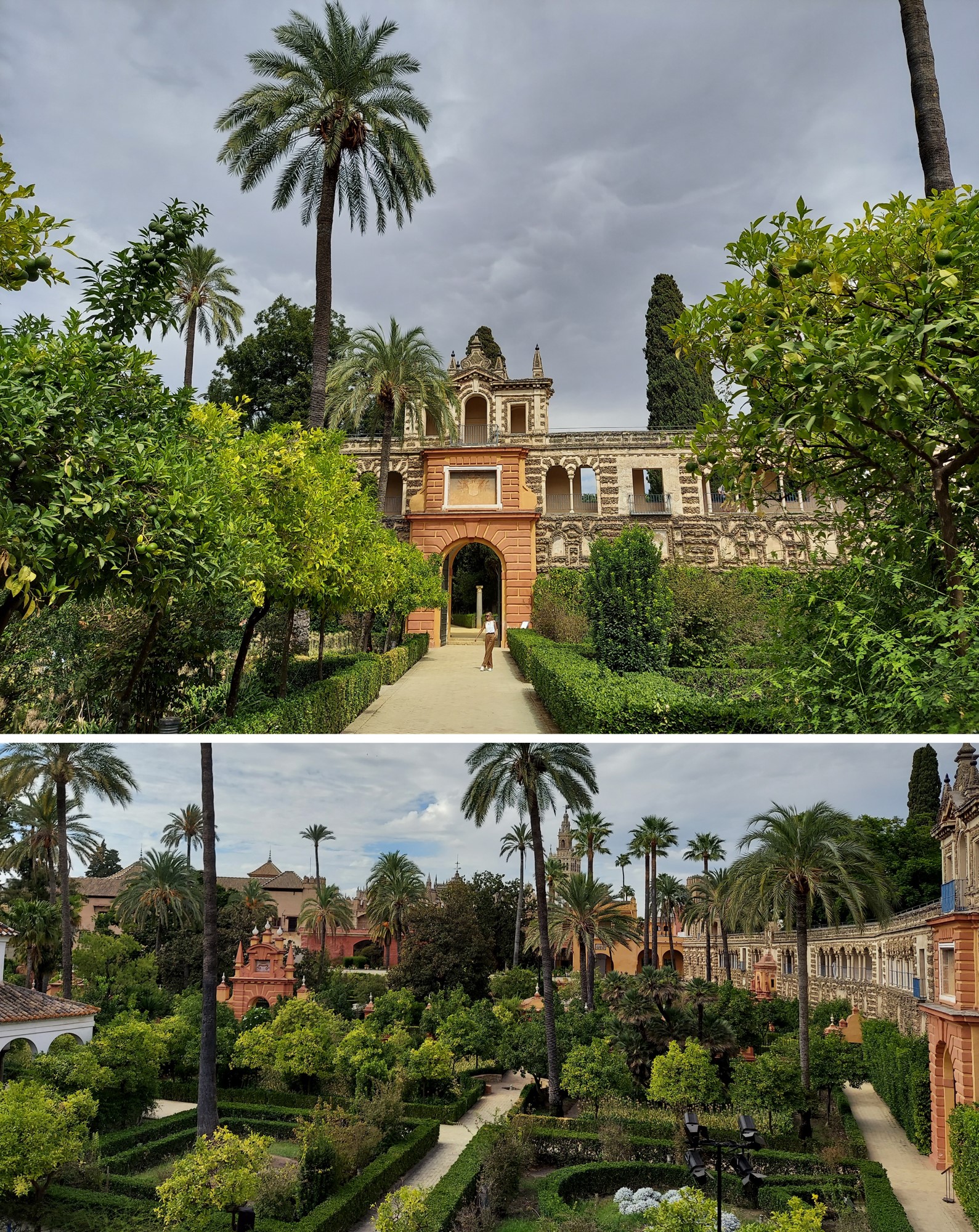
The Puerta del Privilegio, crosses the gallery of the Grutesco to reach the Jardín de las Damas. The Ladies’ Garden already existed in the 16th century, albeit on a smaller scale. In the early 17th century, the Milanese architect Vermondo Resta extended and redesigned it. According to the new scheme, the garden would be a large rectangle divided into eight compartments along a central axis with fountains at the intersections of the paths, and all surrounded by a wall with gates and windows. While the fountains on the side walks are low and very close to the ground, the central fountain is of monumental proportions and topped by a statue of Neptune.
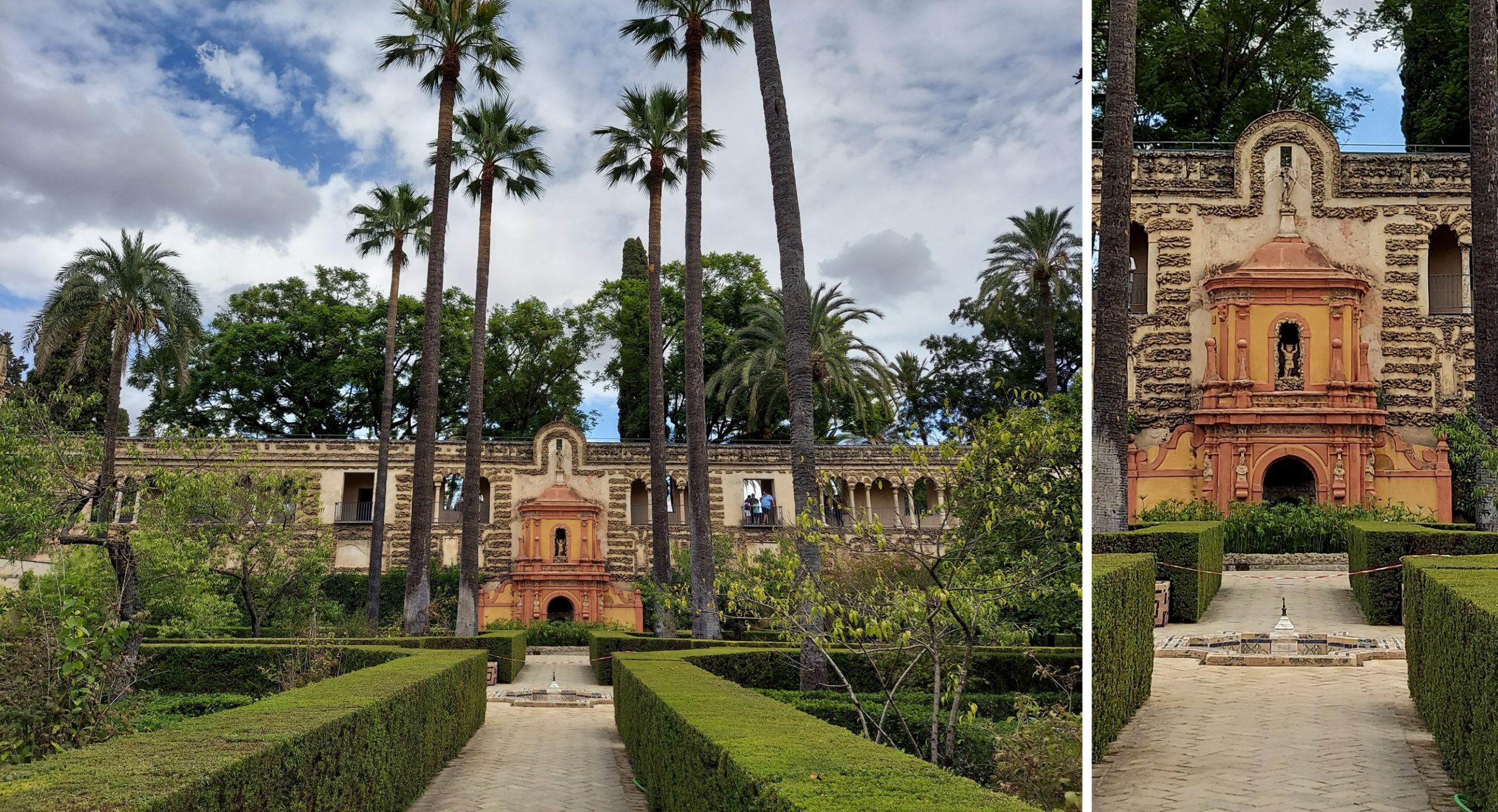
The garden is bordered on the east by the Galleria del Grutesco, with its monumental Fountain of Fame. It is the only fountain of this style remaining in Spain. It is an allegorical representation of fame, whose hydraulic mechanism has recently been restored. It produces musical notes in the pipes of an organ every hour on the hour as the water passes through them. It is the same mechanism used in the Organ Fountain of the Villa d’Este in Tivoli.
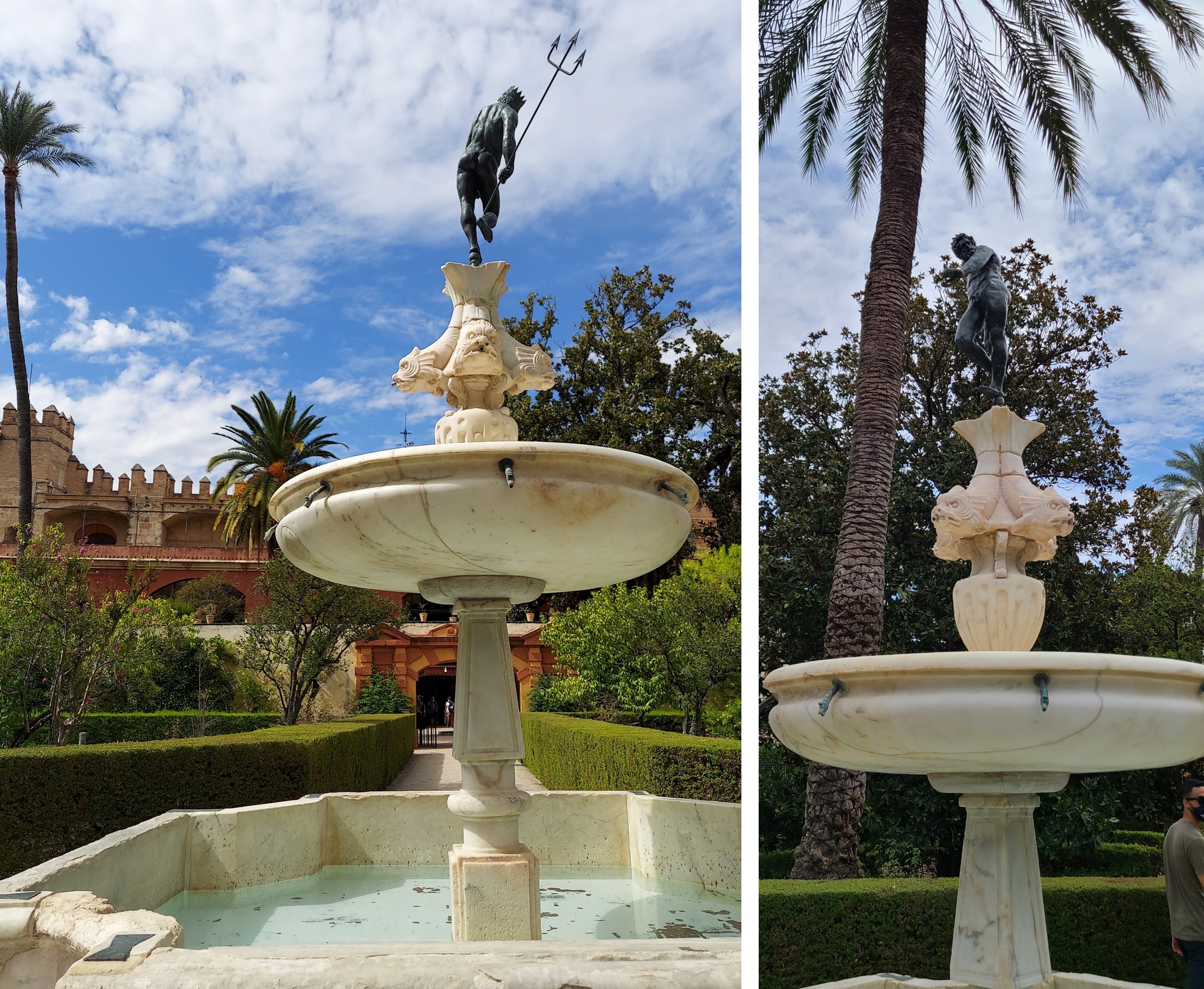
The Fountain of Neptune is located in the Garden of the Ladies of the Real Alcázar. After the fall of a tree that completely destroyed it, it was restored in 2013. What is known of its history is that in December 1606 the merchant Felipe Pinelo acquires in Genoa the marble pieces that make up the fountain, which would be sold to the Alcázar for its assembly in the Gardens. It is said that the resemblance of the Sevillian fountain with the piece that Giambologna made in 1565 for the fountain of the Plaza de Neptuno in Bologna is evident, reason why the one of Seville, could be a reinterpretation of smaller dimensions of the Italian piece. The artist who worked on the sculpture of Neptune is unknown.
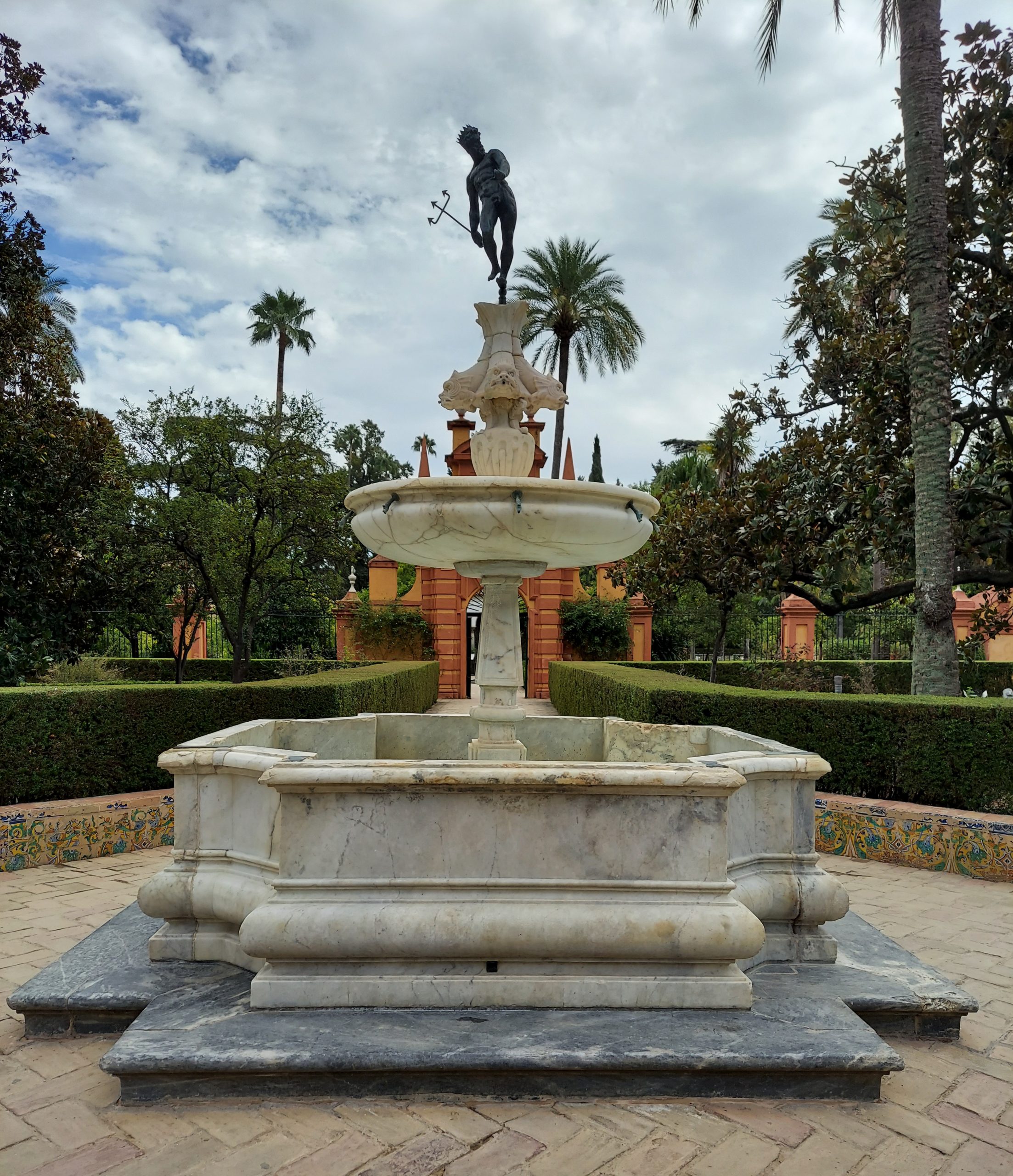
After the restoration, the fountain has recovered all its splendor and beauty, highlighting the Italian marble and the grace of the god of the seas, who plays at balance leaning on a heel.
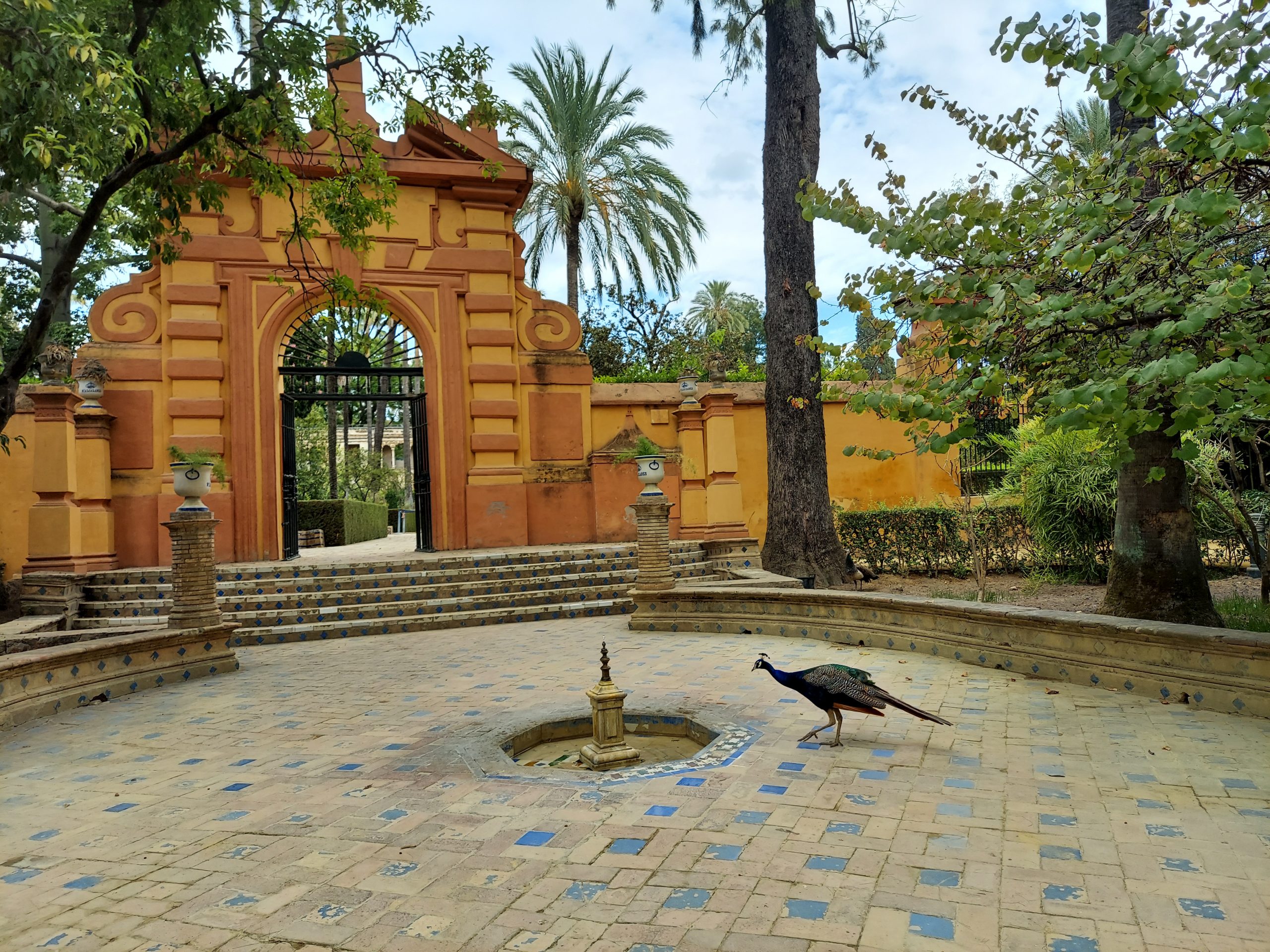
The Old Labyrinth Garden is from the 16th century, disappeared in 1910. The fountain is the only surviving element of the earlier design. It represented Mount Parnassus and was decorated with figures of mythological allegories that served as fountains. The whole, of which hardly any elements remain, would represent the god Apollo surrounded by the nine muses.
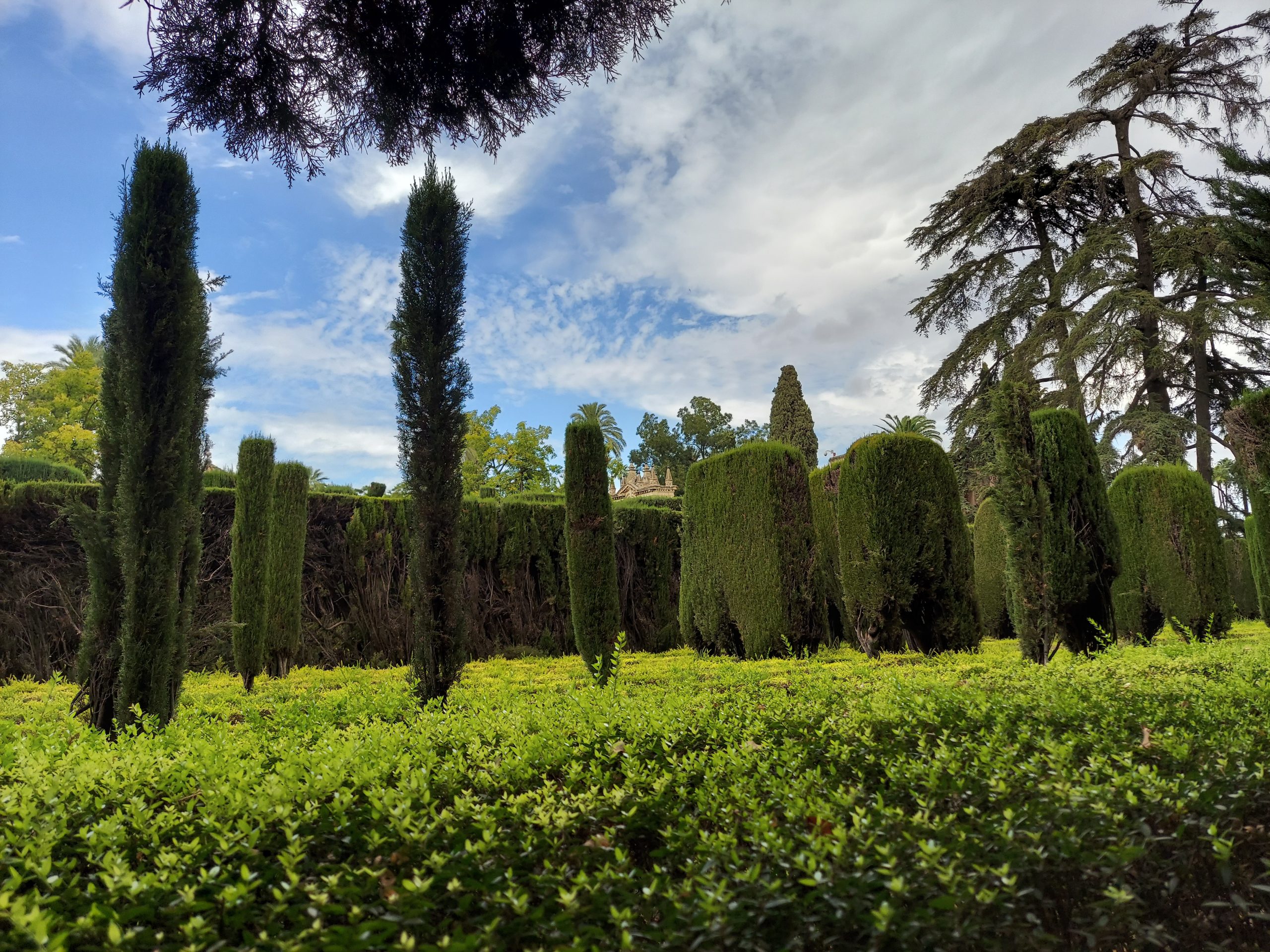
The new Labyrinth Garden of the Royal Alcazar was designed in 1914, after the old one that was located in the current Garden of the Cross disappeared. Made with myrtle, cypress and thuja, it is inspired by Renaissance models. These hedges form different corridors that create the labyrinthine layout.

The Cenador de Carlos V was built in honor of the marriage of Emperor Carlos V and Isabel of Portugal. It has its origin in a Muslim qubba and mixes the traditional Mudejar style with the Renaissance.
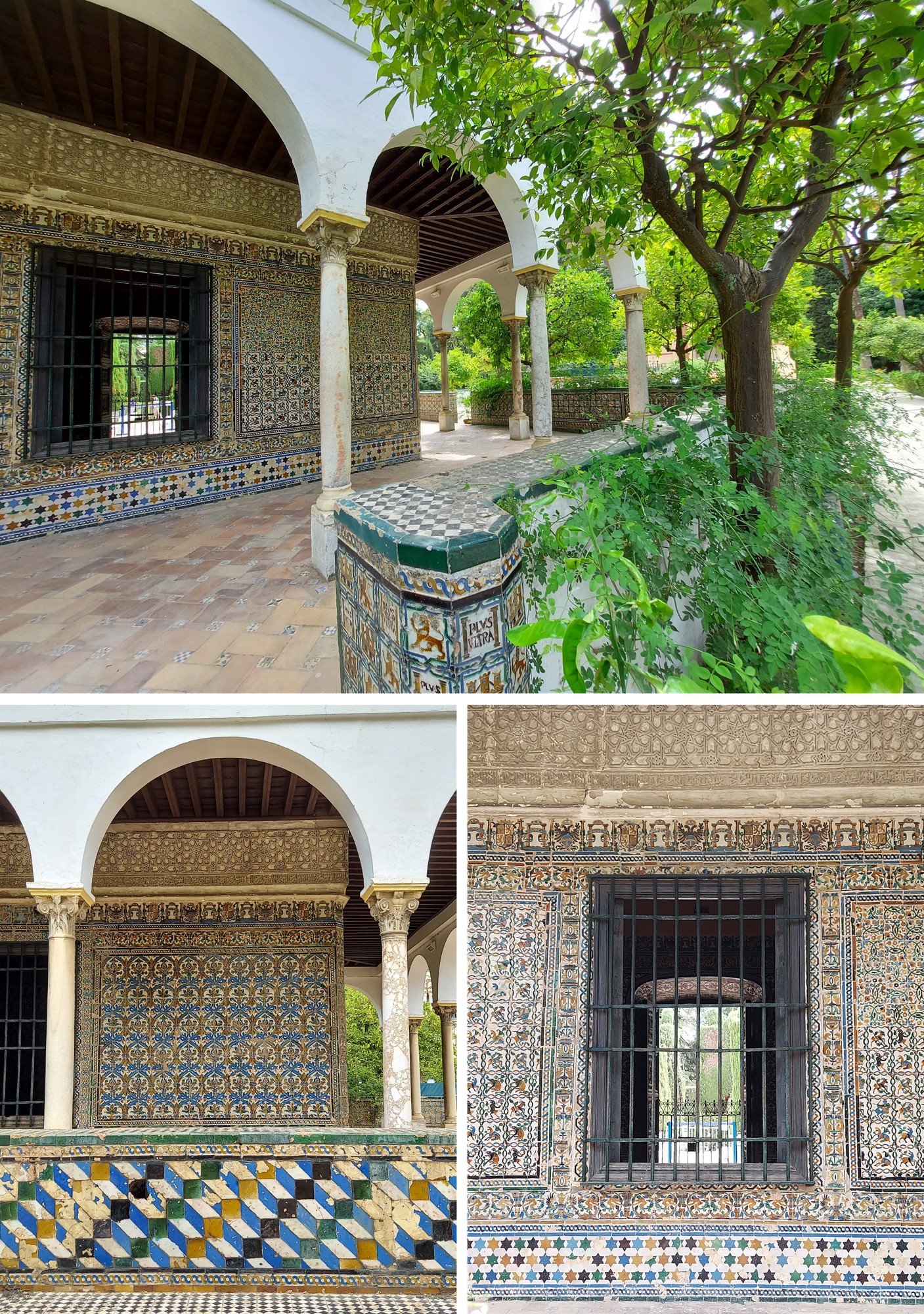
The room is square with a fountain in the middle and a magnificent coffered ceiling. A window on each side provides air flow to cool the interior. The floor of the pavilion depicts the outline of the ancient labyrinth. The ceramics that decorate the pavilion are from the 16th century, from the workshop of the Polido brothers. The author of the Cenador is Juan Hernández.

The Cenador del León was built between 1644 and 1645 by Diego Martín de Orejuela. It is a square space accessed through a semicircular arch. In the three remaining flanks there are windows inserted in niches. This room is covered by a dome with tiles on the outside. In front there is a fountain with a lion, of unknown origin.
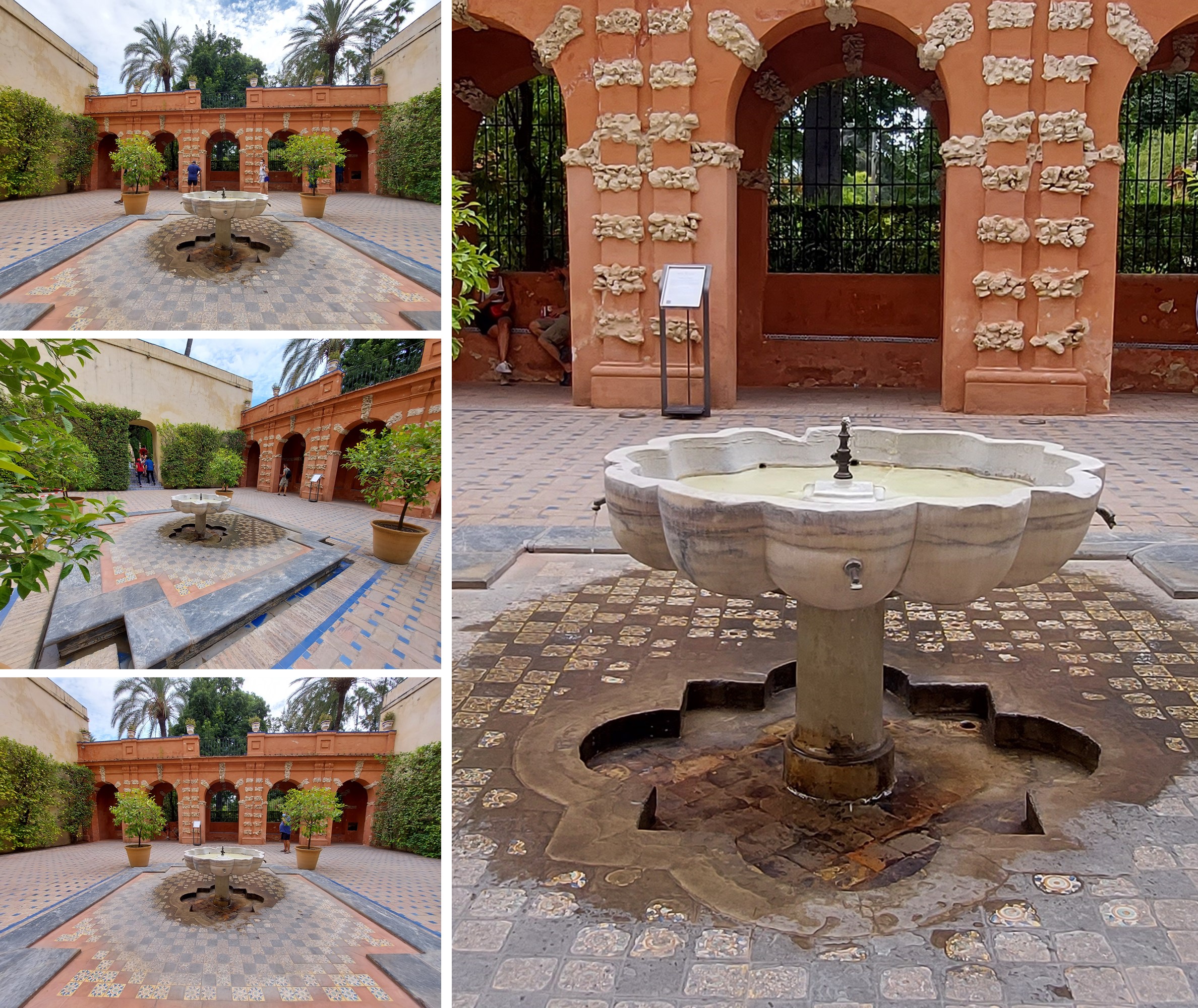
On the second floor of the opposite side there is a gallery with semicircular arches and Doric marble columns made by Lorenzo de Oviedo in the second half of the 16th century. At one time, there was a labyrinth here, but it was removed to lay a new floor in 1599. From this moment on it was no longer called the Labyrinth Garden and became known as the “Garden of Troy”. In the center there is a fountain with a marble cup, placed between 1675 and 1759.
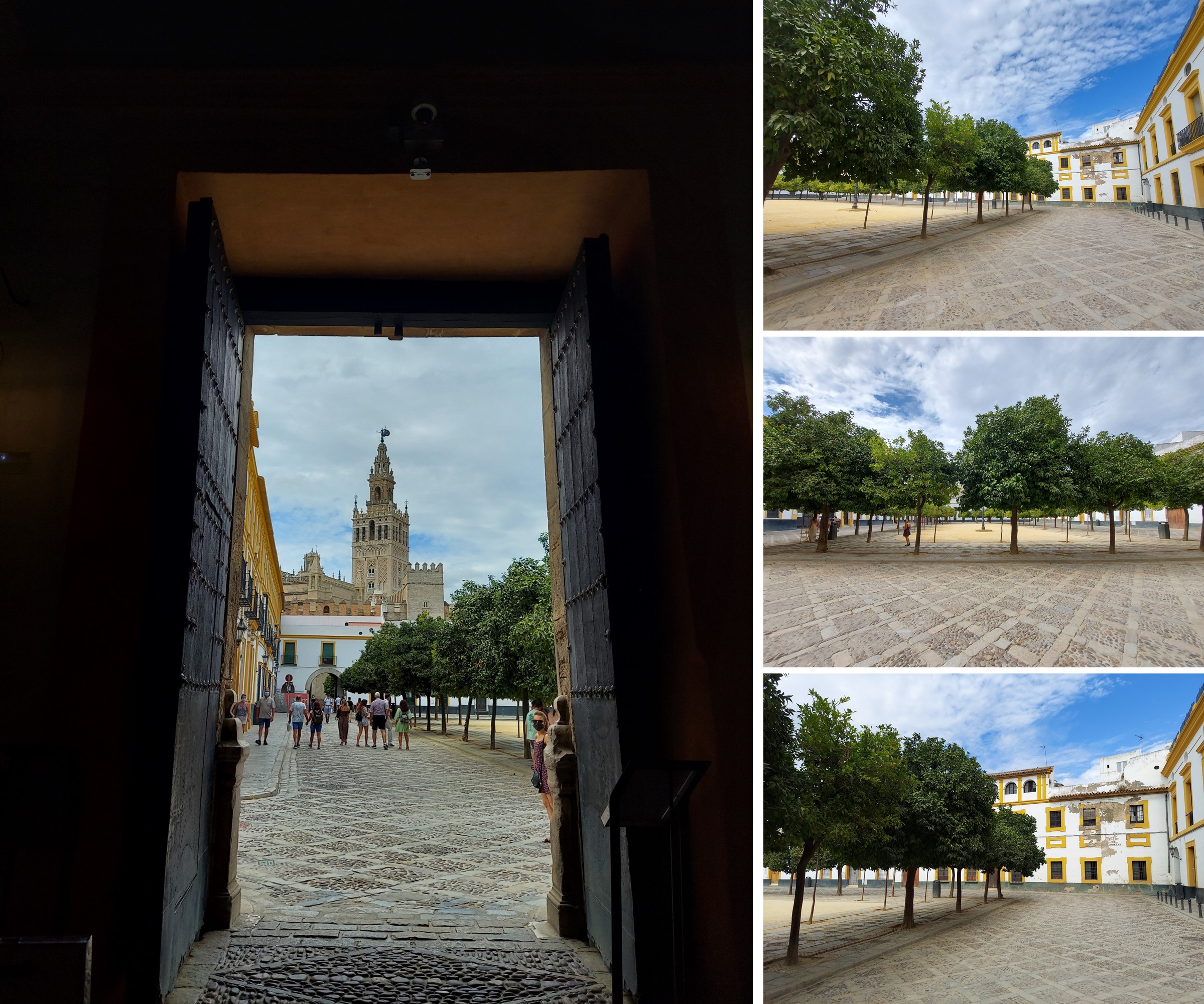
We finish the tour of the Real Alcázar of Seville arriving at the courtyard of Flags where the door of the Apeadero of the Alcázar is located. The Apeadero is a rectangular hall with columns. It was built in the 17th century by Philip III. The façade, in Mannerist style, was designed in 1607. Philip V placed the Royal Armory here. For this purpose, the room was renovated by Ignacio de Sala and Juan Vergel in 1729. A royal coat of arms was added to the façade. In the Apeadero there is an altarpiece from the last third of the 17th century that shows the presentation of the Virgin Mary in the Temple of Jerusalem.
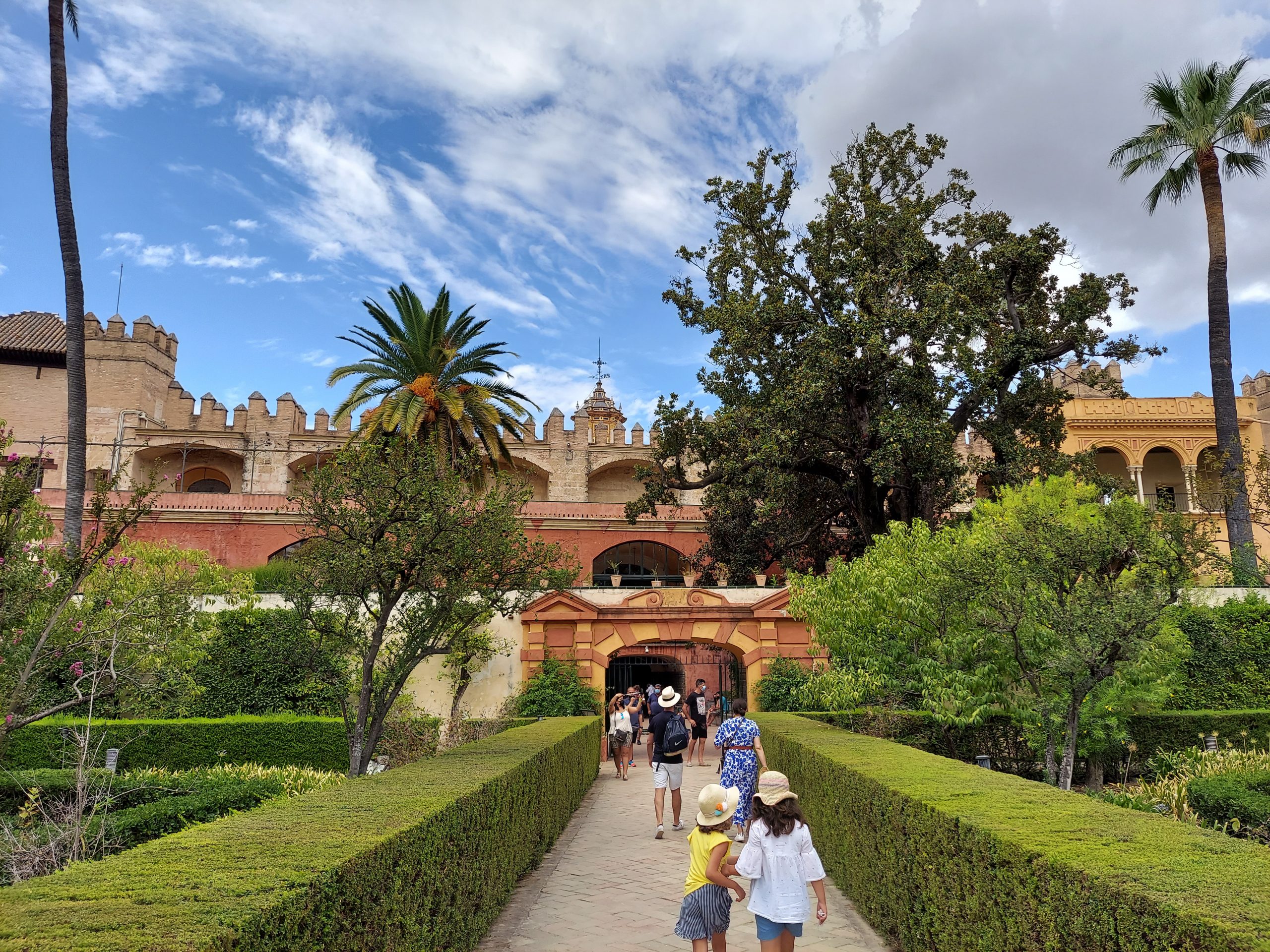
The visit to the Real Alcazar of Seville should be done without haste, taking the time to enjoy this wonderful space that has so much to offer. Any time of the year is a good time to visit the Real Alcazar. However, late spring and early autumn are the most comfortable and coolest times to enjoy a good tour, especially in its gardens.
Resources:
– https://es.wikipedia.org/wiki/Real_Alc%C3%A1zar_de_Sevilla
– https://www.alcazarsevilla.org/historia/
